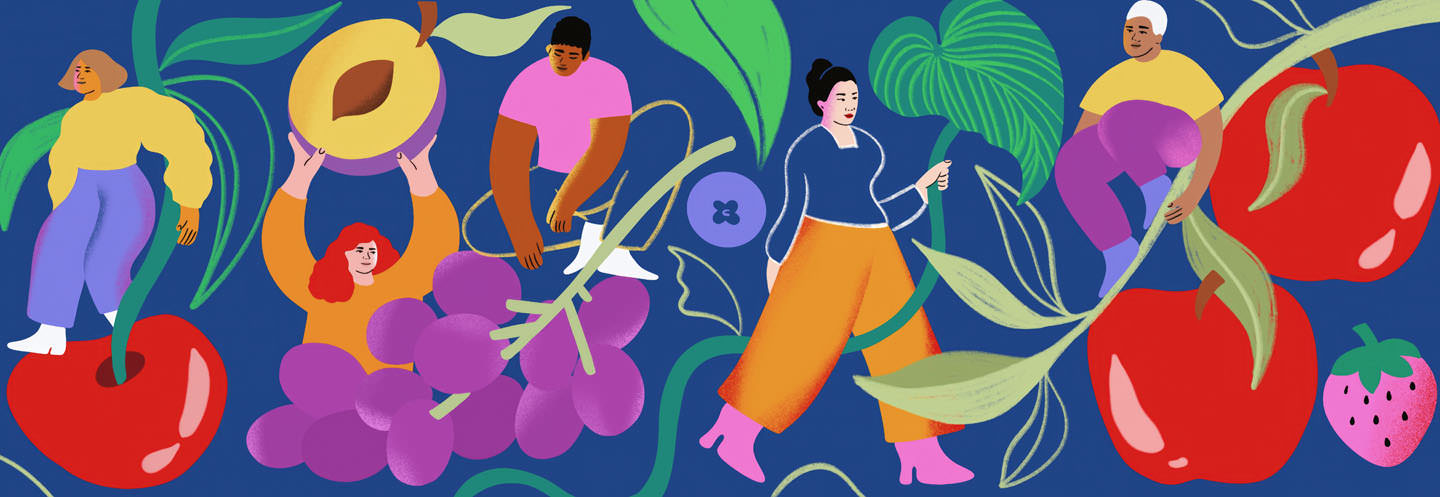When Jennifer Durham bought her Marpole home in 2018, she noticed a grapevine growing on a trellis along the back fence. When an abundance of grapes ripened in the fall, her entire family pitched in to pick them, filling a chest freezer with more than 90 pounds of fruit. The next year, when a fig tree produced a large crop, Durham was wondering how to manage another glut. She remembered reading about the Vancouver Fruit Tree Project and contacted it to make sure the fresh fruit didn’t go to waste. Not only did the volunteers return again the following year, they also took the leftover grapes from her freezer, still full of the earlier bounty, to distribute to people in need.
“The project is a true godsend,” Durham says. “I hate to see food go to waste, but there was nothing we could do with all of those grapes.”
Grapevines and the fig tree aren’t the only plants growing in Durham’s backyard. The previous owners ran a landscaping business and created a beautiful garden with flowering plants, including wisteria and hostas, some non-fruit-bearing but dreamily gorgeous cherry trees, two apple trees, an Asian pear tree, and a plum tree, espaliered along with one of the apple trees against a fence.
Having project volunteers descend on her yard, pick the ripe fruit, leave some behind for her family, and then distribute it is, Durham says, a wonderful service. “I really appreciate that the fruit is going to people who otherwise might not be able to afford it.”
In summer months across Vancouver’s backyards, a cornucopia of fresh apples, plums, and pears ripen, ready to be picked and eaten. But, like Durham, not everyone has the wherewithal to harvest and eat it all—and the VFTP is ready to help. Volunteers will pick, box, and deliver fresh fruit to local community groups for distribution to people in need. Last year was the second-largest harvest ever: 78 “picks” that produced 10,502 pounds of fruit, according to Cat Moreau, coordinator of the project.
Demand for help from the VFTP, now in its 25th year, is matched by the need for fresh produce. As food insecurity rises with inflation and other financial pressures on Canadian households, Food Banks Canada reports that one in four single-parent families have gone hungry in the last year, and 42 per cent of households with children are having trouble meeting their basic needs.
Project volunteers have picked P.J. Mitchell’s apples from the tree in her yard every other year for about 20 years. “It’s a win-win scenario,” she explains. “The apples don’t go to waste, they are put to beneficial use, and the charity benefits from having good food, whether it’s for children, or seniors, or whatever the cause is.”
Hers are Cox’s Orange Pippin apples, a fruit first grown in England, where it is popular for its sweet flavour and orangey-red skin. The tree was substantial and mature when Mitchell bought her Shaughnessy house 34 years ago.
“The house was built in the 1920s, but I don’t know when the tree was planted,” she says. “I wouldn’t be surprised if it was at least 70 years old.” A few years ago, the tree produced more than 100 pounds of apples, all picked by VFTP volunteers and donated to charity.
“Every second year is usually abundant,” Mitchell notes. “I just had the tree pruned for the first time, by the Vancouver Fruit Tree Project, two years ago, and because it was never pruned before, the tree went into a little bit of shock. Last year was not an abundant year, so I don’t know how this year will be.”
While Moreau hasn’t calculated the full value of the fruit—which also includes pears, Asian pears, crab apples, cherries, plums, figs, grapes, and quinces—shared by the project in a summer, it is significant. She attributes the longevity of the organization to its mission of reducing food waste and building community, and its vision of a food-secure Vancouver where everyone has access to fresh, local fruit.
“The volunteers are the true power behind the organization,” she says. “I think that’s why there are always people willing to help. I think they see the value in the organization.”
“We’re always getting a lot of grateful emails,” Moreau says of the project’s community partners: neighbourhood houses, shelters, and community groups with food distribution systems in place. “I think people really appreciate having access to fresh produce, and we’re seeing more and more of the struggle.”
The organization is a registered charity, funded by grants and donations, including, Moreau says, from grateful tree owners. If there is a surplus after the owners and charities receive their share, the volunteer crew who pick the fruit are encouraged to take some.
“They can drop in when it works for them,” Moreau says of the 100 to 150 volunteers who show up from a registry of about 1,000 to help in a given year. “There’s a wide age range for the volunteers. There’s obviously a lot of retired folks, but there are also a lot of young people that are interested in learning more about food systems and local food. “And people that just really love fruit.”
Read more from our Summer 2024 issue.









